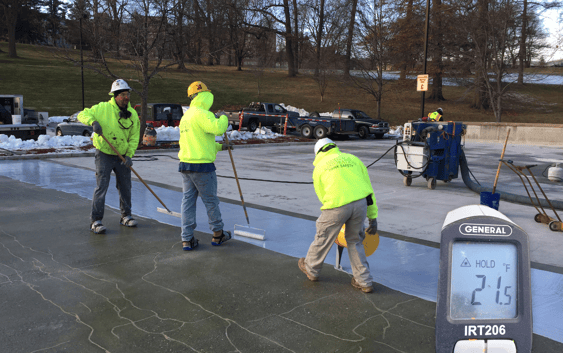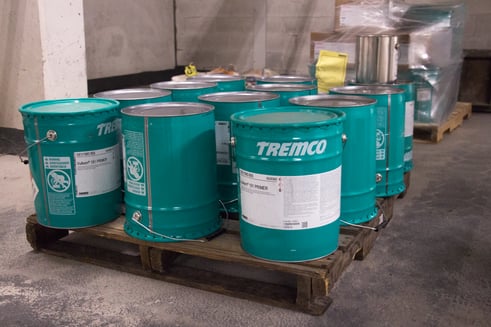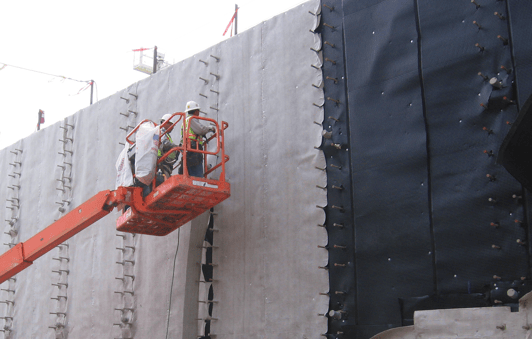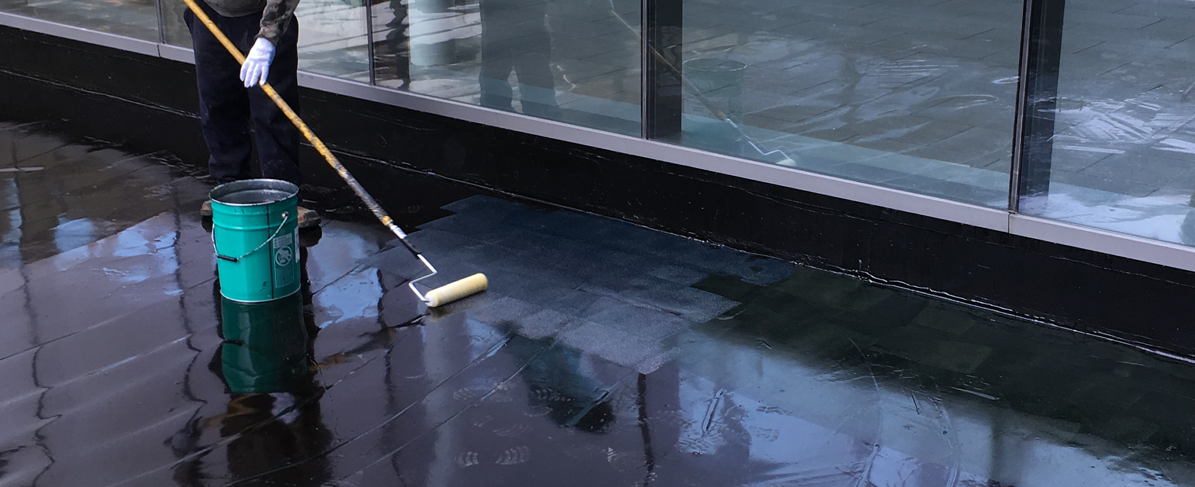When winter hits and temperatures drop, caution must be taken during horizontal and vertical waterproofing projects to ensure a long-lasting application. The feasibility of using cold-applied liquid coatings below 40°F (4°C) is a common question. When possible, it is recommended to install these types of coatings at or above this temperature for ease of application and effective performance of the final installed product.
The feasibility of using cold-applied liquid coatings below 40°F (4°C) is a common question. When possible, it is recommended to install these types of coatings at or above this temperature for ease of application and effective performance of the final installed product.
If it is necessary to apply below 40°F (4°C), the field applicator may be faced with some of the following issues, compromising the integrity of the liquid membrane:
- High probability that the substrate has accumulated condensation, frost, or a thin film of ice— often invisible to the naked eye.
- Slower cure times as a result of lower than optimal substrate and/or ambient temperatures.
Tips for Installing Cold-Applied Waterproofing Membranes in the Winter
Here are 6 tips to optimize the effectiveness of your waterproofing applications when cold temperature installations are unavoidable.
- If you have already selected a waterproofing system, contact the manufacturer’s technical support staff or review the application instructions to ensure the right temperatures for the product to be applied. Not all products can be installed effectively below 40°F (4°C). An alternative solution may be recommended.
- If you have not decided on a product, be sure to review your options in regards to their ideal temperature ranges and your anticipated weather conditions during application.

- Prior to the application, store the materials in a heated trailer or conditioned space and keep the materials off the cold concrete or ground by placing them on a pallet or similar raised platform.
- If a product has already frozen, talk with your manufacturer to discuss how, if it is possible, to prepare it for application. Most urethanes can be warmed up and applied as usual, however products with asphalt emulsions may not be able to be installed after it has frozen.
- Substrate preparation is critical. Make sure the substrate is dry and free of frost or ice before applying the material.
- Install the material per the manufacturer’s application instructions and any cold-weather adaptations they recommend.

Even when the waterproofing system can be installed effectively during the cold, the application will not be identical to one during warm temperatures. Here are some additional considerations to keep in mind during the cold weather process:
- As the materials get colder, the viscosity may increase, causing the application to become more strenuous.
- For some spray-applied products, a heat exchanger may be necessary to heat the liquid to an appropriate temperature for installation in cold ambient temperatures.
- The cure time of liquid-applied products will increase as temperatures decrease, so be sure to factor that added time into your sequencing and scheduling.
- The chemistries of materials impact their success in the cold. Two-component systems may cure faster than single component ones. Products using PUMA technology, or polyurethane-methacrylate, can often be applied down to 20°F (-6.6°C) and still maintain its quick-cure, elongation, superior adhesion and durability qualities.
Alternative Technologies
To address the challenges that low temperatures present when waterproofing with cold-applied waterproofing membranes, there are additional technology options to consider for commercial applications:
 Mechanically-applied sheet products utilizing HDPE and bentonite, like Tremco’s Paraseal, do not require bonding or curing and can be installed at even lower temperatures than liquid-applied.
Mechanically-applied sheet products utilizing HDPE and bentonite, like Tremco’s Paraseal, do not require bonding or curing and can be installed at even lower temperatures than liquid-applied.- Self-adhered sheet waterproofing products also enable cold-temperature application to poured concrete, CMU backfilled walls, and insulated concrete forms. TREMproof™ 560A, for example, is composed of SBS modified bitumen with a tri-laminated woven polyethylene facer. A silicone release paper protects the adhesive side of the membrane. These qualities enhance abrasion resistance, thickness, flatness, and tear properties, and allow cold-temperature application down to 14°F(-10°C).
- Hot-applied rubberized asphalt membranes, such as TREMproof® 6100, can be applied at lower temperatures. These products quickly cool into a monolithic film of rubberized asphalt, exhibiting superior waterproofing capabilities.
Ultimately, it is feasible to apply waterproofing in cold weathers, but special consideration must be taken to ensure long-term performance. Jobsite conditions will dictate when this is not possible. Any attempts to apply Tremco products below 40°F (4°C) must be evaluated by Tremco Technical Services and/or your local Tremco Sales Representative.






